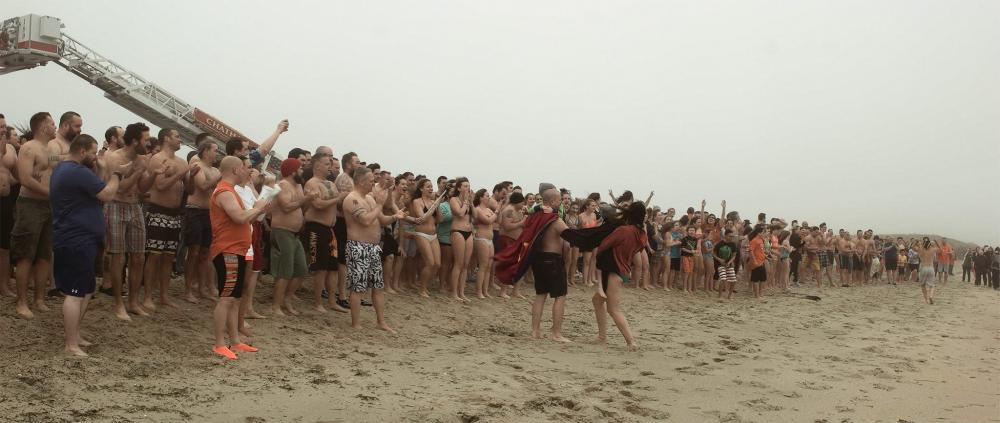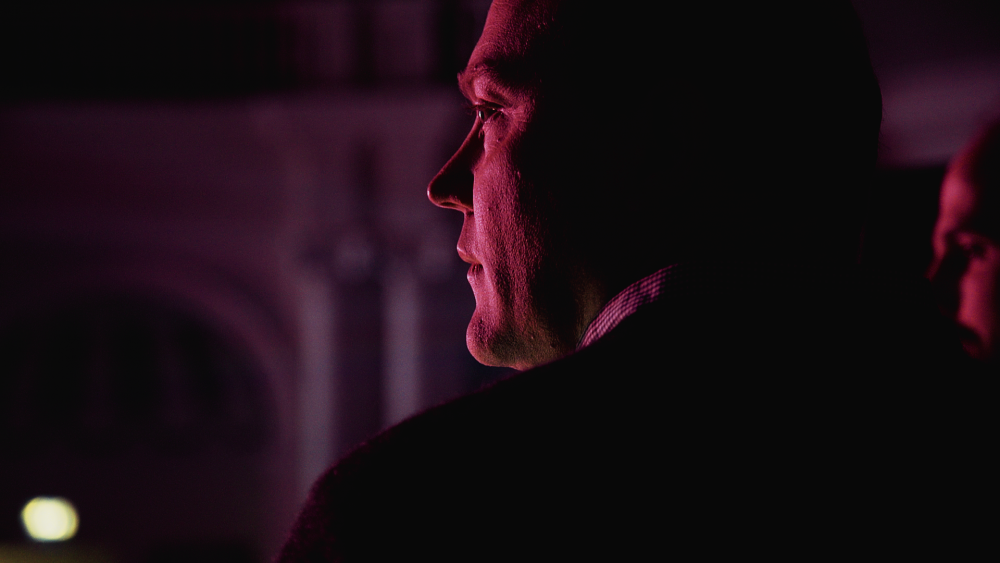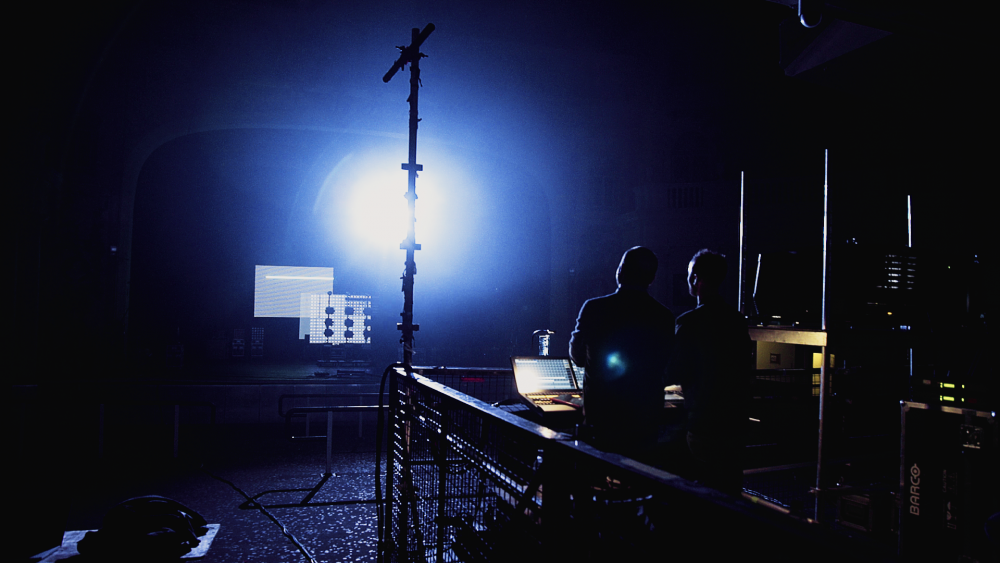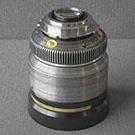Leaderboard
Popular Content
Showing content with the highest reputation on 05/23/2016 in all areas
-
I'm sure Andrew will do more comprehensive tests and show some artistic footage later. All I have time for right now is little tests. To users of the G7, this may be kind of old news. But I'm finding with 4k and the improved processing compared to the GH4, you can raise shadows more cleanly than ever before on a Panasonic mirrorless camera. In this test, I shot at ISO 200 and exposed to just before the 105% zebras started showing. The first clip is the raw footage, the second is with raised shadows and the third is graded. With this method you can easily get a shot with the same tonality as what your eyes see and have absolutely minimal noise.5 points
-

Can I do slow Motion with ablackmagic pocket camera
TheRenaissanceMan and one other reacted to Zak Forsman for a topic
Oh yeah! Many filmmakers like to mimic optically printed slow-mo which is essentially doubling frames to slow things down to half speed. For many, many decades this was the only available method for post slow motion. And I actually prefer its analog feel to most optical flow post slow motion, especially when it's digital artifacts are obvious.2 points -
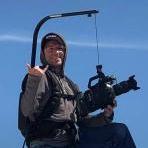
Lenses
Zak Forsman and one other reacted to Geoff CB for a topic
2 points -
I just tested my NX1 using GammaDR, and sharpening at -5. I shot in UHD, downscaled in Premiere Pro to 1080, and rendered out to a DVD. The sharpening looks horrible, and very “video”-ish. The in-camera sharpening is using a contrast-type of sharpening that produces artifacts in a radius around high-contrast objects. You can confirm this increased contrast on a lumetri-scope. On the other hand, setting sharpening at -10 produces beautiful results (without any post-sharpening), and none of the artifacts.2 points
-
The camera which Panasonic can't decide what to call (GX80 in Europe, GX85 in the US and GX7 Mark II in Japan!) really excites me. It's the first time that anyone has put 5 axis in-body stabilisation in a 4K camera which exceeds the performance of the stunningly good Olympus 5 axis system. It's not quite as effective as a gimbal for sweeping handheld movement, but that pain-in-the-ass tripod you can certainly dispense with now, along with that Olympus 1080p mush too!! GRAB A CUP OF TEA, PUT DOWN YOUR F***ING IPHONE AND READ THE LONG ARTICLE!!1 point
-
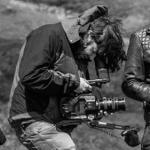
5D mk4 Spec
Tiago Rosa-Rosso reacted to Oliver Daniel for a topic
Give us a Super35 sensor with 10 bit, 4K, decent 120fps, DPAF and C-log in an improved XC10 style body with interchangeable mount and that would be gold! 5D Mk IV will never get Clog. Remember that the C100 Mk III is due within the year. They will want the dedicated video shooters to buy that.1 point -
The "cinematic" or "filmic" look is definitely too broad a concept, which is why I suggested considering the 1DC and 1DX II as two different kinds of film stock: one has softer roll-off, more DR, and a wider color gamut (owing to the advantages of grading with C-Log) and the other has abrupt roll-off, less DR, and a more limited but "vivid" color palette. Neither one is less "filmic" than the other since you can find many historical film stocks that mimic each one of these cameras. Of course, I prefer the first option, and I can't imagine that focusing is all that difficult on the 1DC considering the number of incredibly sharp images I have seen from that camera. And I don't think anyone who buys a 1D series camera for video wants a "proper video camera." That defeats the whole purpose. The form factor, weight, and ease of use alone provide so many advantages that make these cameras essential for some shooters. Besides, I prefer the 1DC's resolving power, 1.3x crop factor, colors, image depth, and highlight roll-off to pretty much everything I have seen from cameras like the Mini 4.6k, Sony FS7 and even the RED Raven that I have ordered (but may cancel or switch to Scarlet-W). And you can't even compare Canon's space-age manufacturing facilities to BMD's amateur and fourth-rate quality control.1 point
-

Can I do slow Motion with ablackmagic pocket camera
muhammadahmad reacted to Liam for a topic
This is a cool test with the bmcc with Davinci's twixtor-like tool. Probably only works this well because there's so little movement. And there's twixtor. Or you could do choppy slowmo which is good enough for Tarantino and others. Depends on the situation. If it's in a good story, I might not even notice it1 point -

Can I do slow Motion with ablackmagic pocket camera
Liam reacted to Zak Forsman for a topic
Lots of successful post slow motion has been done with Pocket footage. You can't do it in camera unless shooting 30fps retimed to 24fps is enough for you. But that's a very subtle look.1 point -

Lenses
DevonChris reacted to TheRenaissanceMan for a topic
It's the 35-70, 24mm 2.8, and 500mm mirror lens that were licensed by Leica. The coatings do differ between the two, and some claim a build quality advantage for the Leicas. I can't speak to the veracity of that. I'd love to see a comparison between the best Leica and Minolta glass. My guess is that the Minoltas would hold up rather well, but lose out a bit in resolving power/microcontrast. They do match perfectly for color and contrast though, which matters more for video shooters.1 point -
Microphone for audio dialogues on set?
JazzBox reacted to AnthonyWithNoH for a topic
Don't waste your time on the Zoom H5 shotgun capsule, it's terrible - I own one. An NTG4+ or NTG3 would be good for outdoor use. I bought the NTG4+ and while it's good enough with my Zoom H6, I wish I would have just gone with the NTG3.1 point -
Not sure what you are after in regards to a "stable/secure desktop," but running an OS in a VM might not be the best way to test such "stability," because of the resource drain and potential glitches. I have used a lot of different desktops and window managers in the past 14 years, and I never had any problems that I can recall. I tend to use lightweight window managers instead of full desktops. By the way, those who use tiling widow managers usually run circles around their "point-&_click" counterparts. In regards to "pro and free" video and photo editors, the two are most definitely not mutually exclusive. A significant number of pros use open source (free) software -- even photo and video editors. For an NLE/compositor, you would probably be using Blender, Cinelerra, Lightworks or Pirnanha (proprietary, with the high-end version at US$250,000). Kdenlive looks like a good NLE, and it is has become more robust and a lot more popular since I played around with it many years ago. The studio version of the Lightworks NLE is probably pretty good, but I have never tried it. There are numerous image editors/processors that run on Linux. My favorites are GIMP and Darktable, but there is also Krita, CinePaint, RawTherapee, Raw Studio, Delaboratory, UFRaw, GTKRawGallery, LightZone, Pixeluvo (looks like an interesting processor/editor combo), Photivo, AfterShot Pro, Fotoxx, etc. These are mostly raster image editors, and, of course, there are also a few open source vector image creators/editors. Both proprietary and open source projects come and go, and no one can guarantee the future. I am guessing that you don't want to stick with FCP. For open source NLEs, Blender has a strong community with a lot of folks crazy about its editing capabilities. The community version of Cinelerra is updated fairly regularly, and it has some unique capabilities (but its default theme is rather garish). I don't know much about the proprietary NLEs, but I think Lightworks has a following. I am keeping my eye on Kdenlive. I wouldn't be so sure of that. I would guess that a few others in the list of the open source image processors above can already read raw files from the GX80. Open source projects can move fast. Most of the raw image processing apps have fine color control. I don't know much about RawTherapee, but Darktable has preset camera color profiles for certain camera models/brands/film stocks. Darktable usually defaults the profile brand/model it reads from exif info, but I sometimes use an Agfa profile on my Canon raw images. Of course, Darktable also allows one to create and save custom profiles. I would imagine that RawTherapee and a lot of the other open source raw image processors offer similar preset/custom profile capability. Judging from the fact that RawTherapee already has the capability to import the GX80/85 raw files, I would guess that there is some current activity in that project. I don't know if people have moved from RawTherapee to Darktable -- there are so many options in the open source world, as evident from the above list if photo editors and raw image processors. I use Darktable because that's what I started with years ago.1 point
-
1 point
-

5D mk4 Spec
OliKMIA reacted to AaronChicago for a topic
If its going to have DPAF then why would anyone pay double for a 1DXii? Doesn't sound like a Canon move.1 point -

5D mk4 Spec
Nikkor reacted to Michael Ma for a topic
The 5D series is probably Canon's biggest money maker. They got to get it right. With that said, it needs C-Log. Whoever suggested that C-Log is only for cameras with the C emblem needs to be fired from Canon. Terrible decisions like this probably cost Canon millions of dollars. But if Canon released the 5D4c for people that want it, it would say that they are listening to their customers.1 point -
You have the possibility to have 3 presets for focal lengths. When you change your focal length, you'd need to set up a fn button and with two taps, it'll be set. Not too bad in a pinch, but if you're changing focal lengths all the time, I think a zoom which communicated focal lengths would be ideal. If it's popular enough, maybe Andrew will write a guide... focussing on the camera and how to shoot effectively with stabilization and get the highest IQ from a camera without the "pro" features of Vlog and such. I'd buy it.1 point
-
Whoops, forgot you have to raise the level from 4.1 to 5.1 before changing frame size. Sorry about that.1 point
-
It can be seen as a commodity, like policar said. An easy to store and durable one. Unless something revolutionizes lenses/cameras, vintage lenses hold their value better than money sitting on the bank, and they can increase their value if they become relevant.1 point
-
Panasonic GX80 - 5 Axis IBIS works on video!
bonesandskin reacted to jai2yeux for a topic
This has to be the strangest video test I ever saw. The gloves threw me off a bit.1 point -

Sony A7s NOISE problems, anybody experiencing?
dahlfors reacted to Ed Andrews for a topic
Another option is to get something like an Atomos for the waveforms. Expose skin tones at around 60/70 IRE with a grey card (about 2 stops over). Also, create your own LUTS which have a minus two exposure compensation in them as well as the desired look on - I use Arri log to rec709 as a great starting point - and load 'em on the Atomos. This will give you a great starting point on exposing and hiding all that noise. When it comes to post, crush the blacks in post to get rid of shadow noise. I shot these at 125000 ISO or thereabouts...1 point -
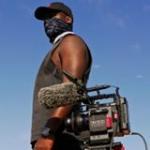
Sony a6300 4k
iamoui reacted to Gert Kombate for a topic
I've been using the a6300 for over a month now and i really have mixed feelings about it. The goods are awesome (1080P 60P, very sharp 4K 24p) and the bad...mmm(rolling shutter and jelly effect is atrocious! the 120P in 1080p full of moire and aliasing, the overall ergonomic of the camera is not really good. But at the end of the day what really matters is/ the stories you tell with your camera. So here's a look at the first project shot entirely on the A6300+ 16-50 kit lens. mostly handled ~95%, and rarely on a mono-pod. USEDEM https://vimeo.com/1676338611 point -
After selecting CBR there should be a slider underneath you can drag to adjust bitrate. For 2560x1440 you need to uncheck the box beside 1920x1080 and manually enter in the numbers.1 point
-

Kinefinity 2016 Nian new product launches
Hanriverprod reacted to TheRenaissanceMan for a topic
He reposted it to correct a factual error from the original video. The out of camera Cineform files from Tone Mapping are available for download on the Kinefinity website. Just incredible to work with. I had a blast grading them every which way and seeing how well they held up.1 point -
Kinefinity 2016 Nian new product launches
IronFilm reacted to Hanriverprod for a topic
poster took down the video and reposted for some reason. here's the new upload: Also, this is from kinemini 4k, looks nice:1 point -

Rangefinder / CoreDNA useful on Century / Optex / Soligor anamorphics?
Timotheus reacted to Tito Ferradans for a topic
When you rack focus with your taking lens is pushing the limits of the anamorphic's image quality, because the anamorphic block is set to infinity. So having a focusing solution ties the whole system together and by having both anamorphic and taking lens at infinity you get their focus to sync. Kind of confusing when put in words, let me know if you get it. hahahah (thanks, man! it was fun doing it!)1 point -

Lenses
kidzrevil reacted to TheRenaissanceMan for a topic
Yeah...really gotta stick with elmarits for the wides and summicrons for 50/90 if you want to keep things economical. They're doable. But the faster, rarer glass will break the bank. My current plan is to forgo Leicas and pair my Zeiss set with fast Minolta MCs, which I can then convert to EF mount. It depends what camera I get next-- only the Leicas will work on Nikon, and I can avoid paying $150 per lens to convert the Minoltas if I stick with mirrorless mount cameras.1 point -
If you want to try Linux but have no experience, start with one of the newbie distros: Mint, Ubuntu, PCLinuxOS, Mageia, OpenSUSE,etc. Also, you can try most of these distros without installing them by booting "live" versions (liveCD, liveDVD, liveUSB, liveSD, etc.). The live versions of these big newbie distros will usually run more slowly than installed versions, but a live OS running off of a USB 3.0 flash drive might be fairly snappy. By the way, there are multimedia distros designed for video/audio production and photography, such as Ubuntu Studio, AVLinux and Apodio. These multimedia distros will often come with a lot of codecs already installed, but it is fairly easy to install codecs on the non-multimedia distros. In regards to GX80/GX85 raw support, you could just install open source Raw Therapee on OSX. It reportedly works with GX80/GX85 which uses the open source DCRaw library, upon which Adobe Camera Raw converter (and pretty much every other raw file converter) is based. Consequently, a lot of the other open source raw "darkroom" might also already have the ability to read GX80/GX85 raw files, as many open source projects tend to move faster than their proprietary counterparts. I use open source Darktable which can also be installed on OSX. If you start moving to Linux, there are other things of which it might be good to be aware, such as which NLEs (both open source and proprietary) are the most actively developed and robust, and such as which audio editor is ideal for your situation.1 point
-
Narrative VR filmmaking
IronFilm reacted to silvertonesx24 for a topic
likely, a completely new form of art will emerge for the technology. Something that combines the gaming and film narrative experience. Imagine Myst/Riven as a VR experience...1 point -
I've done an hour on Vive without any nausea or discomfort.... the latency and comfort is great ... though Gear, and especially cardboard, are uncomfortable after a while. The tech, latency and headset comfort will get better and better though...1 point
-
Sony A7s NOISE problems, anybody experiencing?
dahlfors reacted to Luke Mason for a topic
Sony cameras employ dual stage gain so noise in the shadow will be very blocky, solution is to overexpose, for low light scenes it's not necessary to use s-log as the scene dynamic range is low.1 point -
But Red Weapon users are very few in number and the market for medium format is very large in comparison (much larger than leica R). The prices will go up when there is the 5D equivalent of medium format (When the D3 came out, many lenses sky rocket, the 28 1.4 for example, because nikon had a poor new fullframe lens lineup).1 point
-
Bullshit, especially since most modern ILC lenses are fly by wire and lack any precision at all. My a7rII can lock onto a face and track it while flying on a gimbal and I can tap the LCD of my a5100 to focus on anything I want with perfect precision. Have you seen the way Canon's dual pixel can track and rack focus? It's awfully nice to have the camera track someone during an interview or a walk and talk without trying to judge whether or not they're in focus, even when shooting something like the 50/1.2. My eyes have recently just started to degrade a bit with everything from arms length to right against my face getting a little fuzzy, AF has saved my bacon more than once. Who cares as long as you get the shot and payment is made? For a one man band like me, AF has been a gift from above. I'll never buy another camera that can't match my a7rII. YMMV1 point
-

Let me share this music video shot on Micro Cinema Camera
John_Harrison reacted to kaylee for a topic
i goggled "music video" and this came up. director is some guy named paul thomas anderson. doesnt seem to match your formula. first time director maybe? clearly not a "pro"1 point -
A5100 is interesting. Seems like a better deal than the A6000 to me but was overlooked I looked into the image quality and it seems identical to the popular A6000 but with that all important touchscreen for the phase-detect AF. Sony are really silly not putting a touch screen on the A6000 and A6300, especially for the YouTube vlog crowd. No magnification during recording on GX85 sadly. Hoping GH5 will have this.1 point
-
How close can you get the Zoom with a capsule stuck on it to the actor's voice? I'm not super-familiar with that setup, but I'm thinking it's for ambient sound or recording concerts and such. If you're doing narrative work or interviews, you need a decent mic as close as possible to the subject. And optimally it's a mic that captures as little extraneous sound as possible. A Sure 57 2 feet from the talent is going to trump a zillion-dollar hyper across the room - much less a Rode videomic on the hot shoe. Think about getting a hyper on a stand, or a quality lav on the chest, while you're trying to shoot with a lens long enough for the look you want - usually 5 or 6 feet away for starters. Work backwards from there - what's it take to get up-close audio, with as little ambient sound as possible, into your edit? Not necessarily into your camera, but on your timeline? There's no super-secret formula you'll find that beats a hyper mic just out of the frame. Plug that mic into a proper recording chain (balanced low impedance cables, decent preamp, decent recording medium). Stage yout gain so you get the max signal to noise with no distortion. Find a way to synch it to the camera (even FCPX has auto-synching built-in, or synch by ear). And it will synch to the built-in mic on about any DSLR - your synch track doesn't need to be amazing. Get a clapboard if you're worried. That's it. A $1500 Schoeps mic is just icing on the cake. The basics are the basics and they work.1 point
-
Leica R - f2 or faster.. native e-,ount and m4/3 lenses will depreciate in value since they'll always be less adaptable than slr lenses. personally I feel if a lens requires electronic contacts to allow it to be used, it's almost certainly gonna devalue rather than increase.1 point
-
As written in the article "You can touch the screen whilst recording to rack focus. It works well but not quite as well as Dual Pixel AF on the 1D X Mark II since there’s a millisecond of a shimmer at the end of the rack. Contrast detect AF doesn’t yet eliminate hunting." Actually this my major problem with Panasonic/Olympus cameras. I have the Sony A5100, the only touch-operable Sony Alpha camera, and because of its phase detect autofocus points, it performs brilliantly smooth, shimmer-less focus pull for $500. This inherent shimmer in MFT cameras practically negates an important benefit of their anyway brilliant touch screens. Canon 70D, 80D and Sony A5100 are the only reasonably priced cameras (all HD-only, unfortunately) that can perform shimmer-free touch-to-pull-focus operation. Sony is repeating its silly mistakes again and again not to add touch-operability to its excellent 4K PDAF cameras: A7Rii, A6300.1 point
-
Try it... then you'll understand this is far, far different to 3D films1 point
-
There's only so much one can be critical of Canon, really. It's like screaming at a wall. Also, back in the nebulous days of DSLR filmmaking, it was exciting to see higher video quality from small packages like GH2 and later Magic Lantern Canon. I guess we sort of have gotten used to it. Nowadays, even if Canon doesn't deliver, Panasonic, Sony, Blackmagic, and even Samsung have already jumped in to fill that void. It's come far from the GH2 days. I only hope the Samsung hack receives similar coverage from bloggers. It could be a big push to have that sort of coverage and enthusiasm that EOSHD did for the early HDSLR cameras.1 point
-
I'm amazed that not one response here has included the word "impedance". Generally, (in the realm of microphones) XLR gear is expecting a low impedance signal; and mini-plug gear is expecting a high impedance signal. I'd at least get a barrel-style XLR to 1/4 transformer adapter, and then add a 1/4 to 1/8 (though these days someone may make an XLR to 1/8?). The other issue is that those three pins each do something. Most camera-in jacks are TR (tip ring) for a mono input, or TRS (tip ring sleeve, three conducters) for a stereo input. I believe most DSLRs have a stereo mic input, but could be mistaken? So you have the potential for grounding problems as well. The design of the XLR connector is "purely for the stability of the connection" - it's pretty robust - but most XLR mics - and any you'd really want to use on-set - will be XLRs that are using the three pins to carry the standard low impedance signal. You can do low impedance with any three-conducter setup (1/4 TRS is popular) but mics for on-set audio (ecluding lavs) will use the full-sized XLR, will require phantom power, and will be low-z. Speaking of phantom power - some mics have an internal battery, but if not, you're limited to using dynamic mics which generally aren't used for film sound for a host of reasons. There's another current thread here dealing with this exact subject. Unless this is just a hobby for the OP, I'd say at the very least get a decent preamp that converts the XLR input to a preamped 1/8 output. And for probably the same money, you could get, say, a Tascam DR60D ($169 if you shop around, and showing up used all over), which has phantom power, mic power, meters, headphone and camera out level controls, minus 6DB safety tracks, low cut, a limiter, slate tone, etc. Far as I know it's about the best budget solution to beginner's audio needs, and the adjustable camera out allows you to stage your gain and at least try to get a clean and strong signal to the camera if you don't want to synch in post (and still have a nice clean recorder track if the camera audio isn't optimal). I imagine it would really up the quality of something like a blade as well. I know some of the monitor/recorders have audio ins and meters, but you're missing a lot of really necessary features - features that can really save your butt - and you're not talking investing thousand of bucks to get those features. If you're planning to charge money, I'd really recommend a pro solution, even something entry level like the DR - it will outlive your next ten cameras.1 point
-
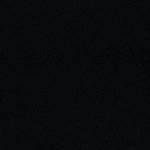
Blackmagic Micro Cinema Camera
viranikenya reacted to Xavier Plagaro Mussard for a topic
If there is a field where 4K makes sense 100% is in drone work. I wouldn't loose time with the BMMC, imho.1 point -
Start with vimeo 1080p preset then: Export in 1440p CBR at 90 mbps for 1080p On 4K export 120 mbps CBR. This is a 1080p that I upscaled to 1440p for vimeo.1 point


